If you’ve been looking at lab grown diamonds you will no doubt have come across the terms CVD and HPHT.
In this article I will explain what the two terms mean and what to look out for when buying lab diamonds whether CVD or HPHT.

Definitions
First let me start out by giving you the definitions for both terms.
CVD stands for Chemical Vapor Deposition.
HPHT stands for High Pressure High Temperature.
The CVD Process
CVD is a technique that is applied in the manufacturing of various types of materials and not just in the process of creating diamonds. Actually you may have done some CVD yourself. Have you ever darkened a piece of glass by holding it over a candle? You would have noticed that it left a thin layer of soot on the glass. That’s chemical vapor deposition in its most basic form.
No you wouldn’t have made a diamond, but you would have performed a rudimentary form of alchemy, and the same basic principle is used to create diamonds. Carbon atoms under the right conditions will bond with the carbon atoms which make up a diamond. The creation of diamonds is a process that is basically a refined way of doing the same thing cavemen did.
Cavemen practiced chemical vapor deposition when their torches left soot marks in caves. All modern labs have to do is control the way the molecules arrange themselves when the carbon atoms are deposited and make sure the carbon atoms all bond together without any impurities caught in between while trying to avoid leaving vacant areas as the layers build up. Yeah, not super easy, but obviously doable.
The way they make this happen is by placing a substrate, also called a base plate, or diamond seed, into a super heated vacuum chamber. The chamber is filled with gases including hydrocarbon gas. As the gas is microwaved the carbon part of the hydrocarbon gas bonds with the carbon atoms which make up the diamond seed.
In order to prevent the atoms stacking in a disordered way they have to stop the machine every so often, polish the diamond growth plate and start it up again. If they skip this part of the process they can end up with a diamond that has a lot of vacancies between the atoms. You can tell this has happened when a CVD diamond appears brown. It is possible for the grower to reduce the brownish hue by annealing the diamond. This involves high pressure and high temperature. Of course sometimes the stopping and starting of the machine which I mentioned earlier can also leave the diamond with visible growth lines. So it’s a tricky process to get it just right.
The HPHT Process
HPHT diamonds are made by placing a small diamond seed into a high pressure chamber. The seed is then subjected to temperatures of around 1500° C. Pressure is applied upwards of 1,500,000 PSI. The chamber not only has the diamond seed in it. It also is filled with a metallic flux which contains carbon. The carbon atoms begin to bond with the carbon in the diamond seed. HPHT diamonds grow outwards from a central point. This results in less diamond needing to be cut off from HPHT diamonds compared to CVD when we are talking about the finished product.
Now you would think that the fact that less diamond is wasted to get a finished HPHT diamond would make HPHT diamonds automatically cheaper to produce. However the electricity consumption used in the production of CVD rough diamonds is generally less than is used in the production of HPHT diamonds.
So in the end both come out fairly equal both in terms of production costs.
Differences in Color
These two main methods commonly used in the creation of lab diamonds, that is CVD and HPHT, each tends to produce diamonds with differing hues. HPHT diamonds can have some metallic flux which remains trapped within the diamond material and this can give it a grayish hue. The presence of boron in HPHT diamonds can give them a slightly bluish tinge. Some diamond grading reports will mention “Blue Nuance” though some diamonds do have blue nuance without it being mentioned on a diamond’s grading report. See my article on Blue Nuance for more detail on this interesting phenomenon. What is Blue Nuance In Lab Diamonds? Is It Good or Bad?
| Hue tendencies | |
| HPHT | Blue/Gray |
| CVD | Brown/Yellow |
Clarity Characteristics
There are different types of inclusions in the different types of lab grown diamonds. CVD diamonds generally don’t have a lot of foreign matter in them. What are labeled as inclusions are usually breaks in the growth pattern, or what’s referred to as strain patterns. The inclusions in HPHT diamonds on the other hand usually are non diamond material. Some HPHT diamonds can even be attracted to a magnet if the type of metallic flux it was grown in is attracted to magnets and is present in sufficient quantities.
| Clarity Characteristics | |
| HPHT | remnants of metallic flux |
| CVD | strain patterns |
So how much do we have to worry about inclusions? It’s actually not too bad, as lower clarity grades are rarer in lab grown diamonds than in mined diamonds.
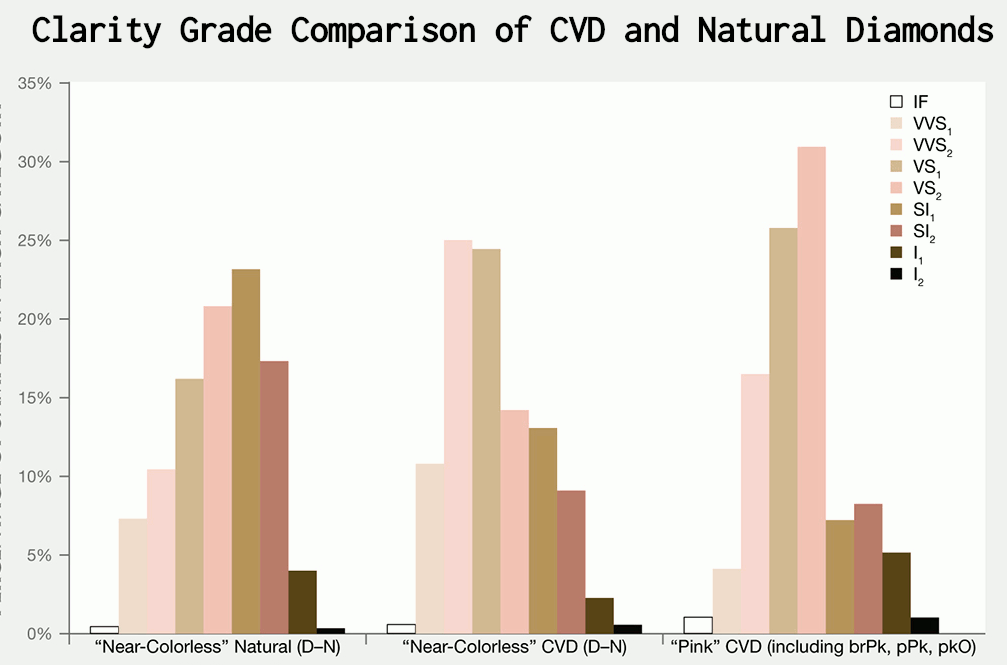
It’s easier to find a VVS diamond among CVD diamonds than among natural diamonds. An analysis of 1000 diamonds in each of the three categories shown in the graphic above conducted by GIA and published in Gems & Gemology, Fall 2016, Vol. 52, No. 3 found that just over 25% of CVD diamonds could be given clarity grades of VVS2, which was more than double of what could be said for natural diamonds.
Does this mean VVS2 will be cheaper? Not necessarily. The price of lab diamonds is loosely tied to the price of naturals so don’t expect to pay less just because VVS2 isn’t as rare among lab created diamonds. The good news is that it will not be too hard to find a VVS2 lab grown diamond if that’s what you want.
Many people have told me that they don’t mind spending a little extra for higher clarity as they feel that they might as well go for the best the can find. After all they are already saving money by buying lab grown.
Now you may have noticed that the above chart does not include HPHT diamonds. GIA did not have any article with that information, from what I could find. In order to get an idea of the clarity distribution among HPHT diamonds I used the search function at James Allen to see how common each clarity grade is. At the time of writing my research finds that 99.99% of the lab diamonds at James Allen are HPHT diamonds.
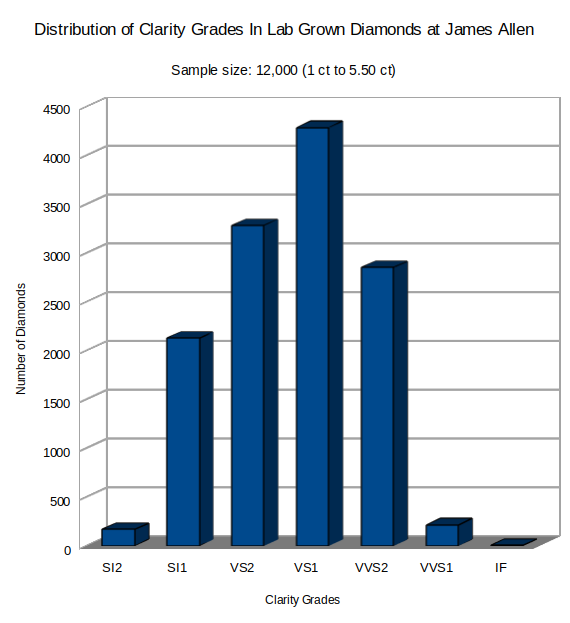
VS1 were the clear majority followed by VS2, VVS2, and SI1.
As VS2 and above are generally considered “eye-clean”, meaning inclusions are not visible to the unaided eye, you can see that there are plenty of eye clean diamonds to choose from. Whether you are looking among CVD diamonds or HPHT diamonds you will not usually be overwhelmed with lower clarity grades, unless of course you choose the wrong jeweler.
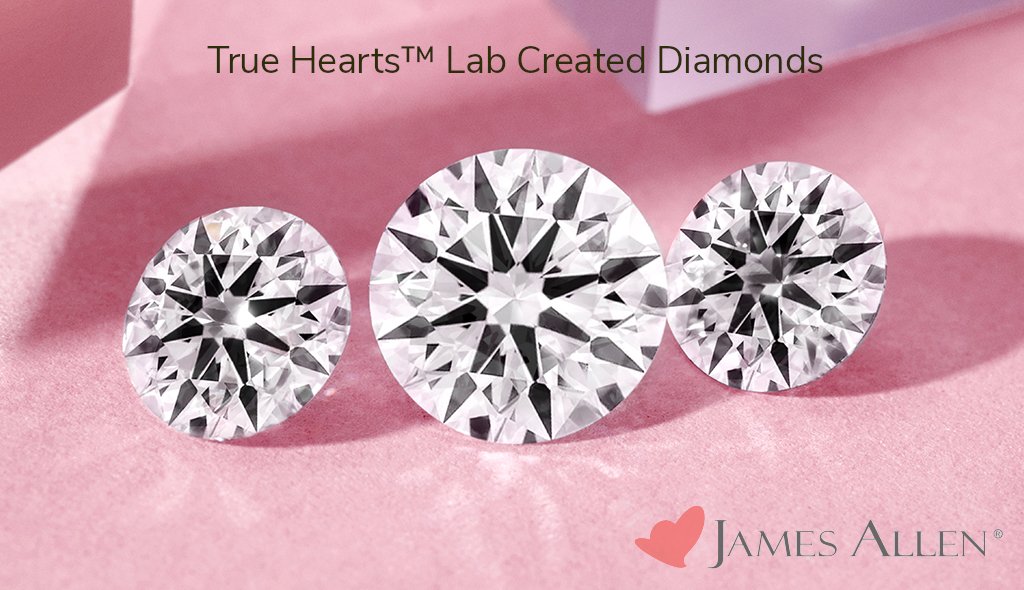
Between CVD and HPHT, which technology can produce the largest diamond?
The largest reported faceted CVD-grown diamond to date is a 12.75 ct round brilliant (“IGI’s Hong Kong lab certifies largest CVD grown diamond,” IGI Press Room, November 23, 2020).
The largest reported faceted HPHT grown diamond is a 20.23 Ct Fancy Vivid Yellowish Orange, VS1 elongated cushion cut.
GIA also reports that they have graded a 15 ct HPHT grown near colorless diamond. It was issued an H color grade. The clarity grade it was given was I and it had very obvious growth lines so these diamonds in spite of their impressive size are far from perfect.
For the most part people looking for engagement rings are looking for a diamond within a 1ct to 2.5 ct range. Online retailers such as James Allen can provide you with a diamond up to 5 carats.
Bottom line: which is better?
The answer is: it depends.
It depends on how you feel about post growth treatment. It depends on whether you prefer a diamond to have a blue or a brown hue, if you are going for one that has a lower color grade.
The truth about post growth treatment
HPHT grown diamonds are less likely to need post growth treatment. As the demand for treated natural diamonds has always been relatively low there is a stigma against treatment that has carried over into lab grown. The main fear or concern people have expressed when it comes to treated diamonds is that they aren’t sure if the diamond is going to hold its color permanently. It’s been known for a long time though that natural diamonds that are subjected to annealing to adjust their color are permanently changed. I have not come across any evidence to suggest that it’s any different for lab created diamonds. Post growth treatments are permanent, as far as I am aware.
James Allen chooses to only list lab created diamonds that have no post growth treatment indicated on their diamonds’ accompanying diamond grading reports. From what I have seen this means that the vast majority of their diamonds are HPHT diamonds. I believe this was a decision they made because it was easier to list only diamonds which are as-grown than to try and educate the public and get people to understand that post growth treatments are not a problem.
How Much Power Is Used?
JCK magazine published an article in 2019 which attempted to lay out all the facts regarding how much energy is used in the production of diamonds both lab created and natural. The problem is that not every company discloses how much energy is consumed in the production of a diamond. Still the article gives a good rundown on the situation but we can’t say with any certainty how much energy is consumed in the creation of a lab grown diamond. The numbers range from 20 kWh per carat up to 1700 kWh per polished carat.
If sustainability is a concern then I recommend buying diamonds made by a company that at least has carbon neutral certification. Diamond Foundry for example has carbon neutral certification. You can find their diamonds at VRAI.
Ritani also stocks some Diamond Foundry diamonds as do other retailers.

Send in your question
If you are looking to buy any type of diamond jewelry online you are welcome to send in any questions you may have.
As an affiliate of the some of the world’s finest jewelers I am motivated to find the right purchase that is perfect just for you. Every person has specific needs and every jeweler has specific areas in which they excel.

Thomas J Stevens GIA DG CSG

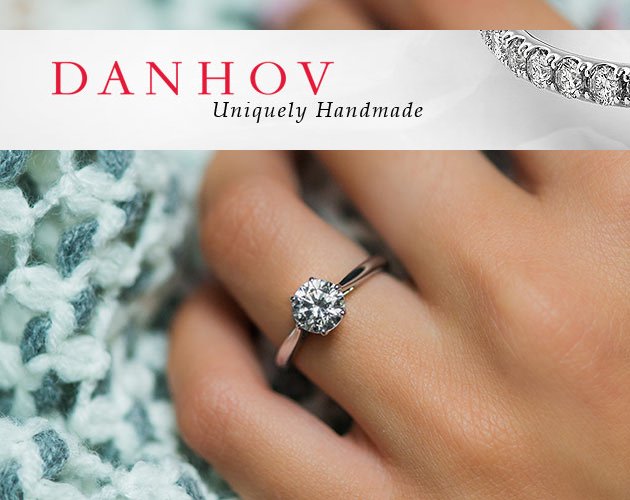
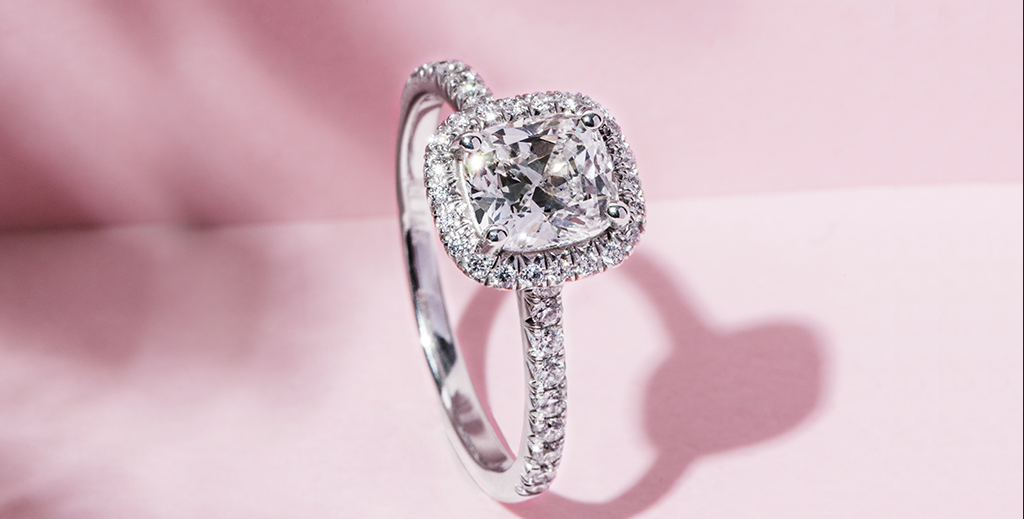
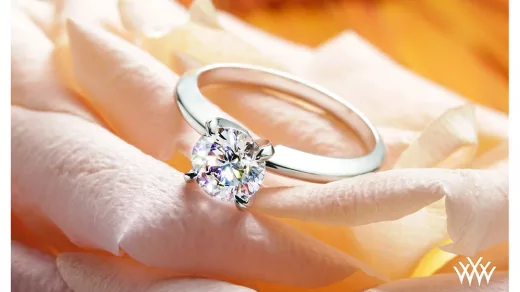
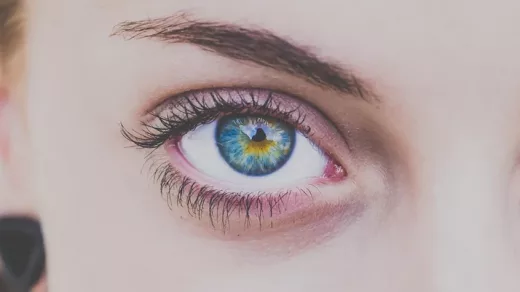
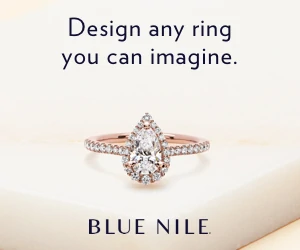
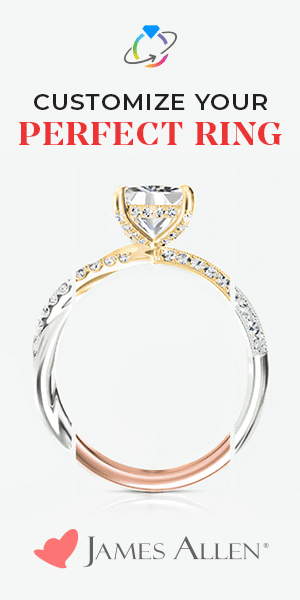
I bought an HPHT diamond. I just feel like they are more clear and brilliant.
Mine was 1.80, vvs2, F, HPHT and I tell you what, it’s amazing! Absolutely amazing. Everyone I’ve shown it to is just WOWED by it! It’s the way to go, if you ask me.